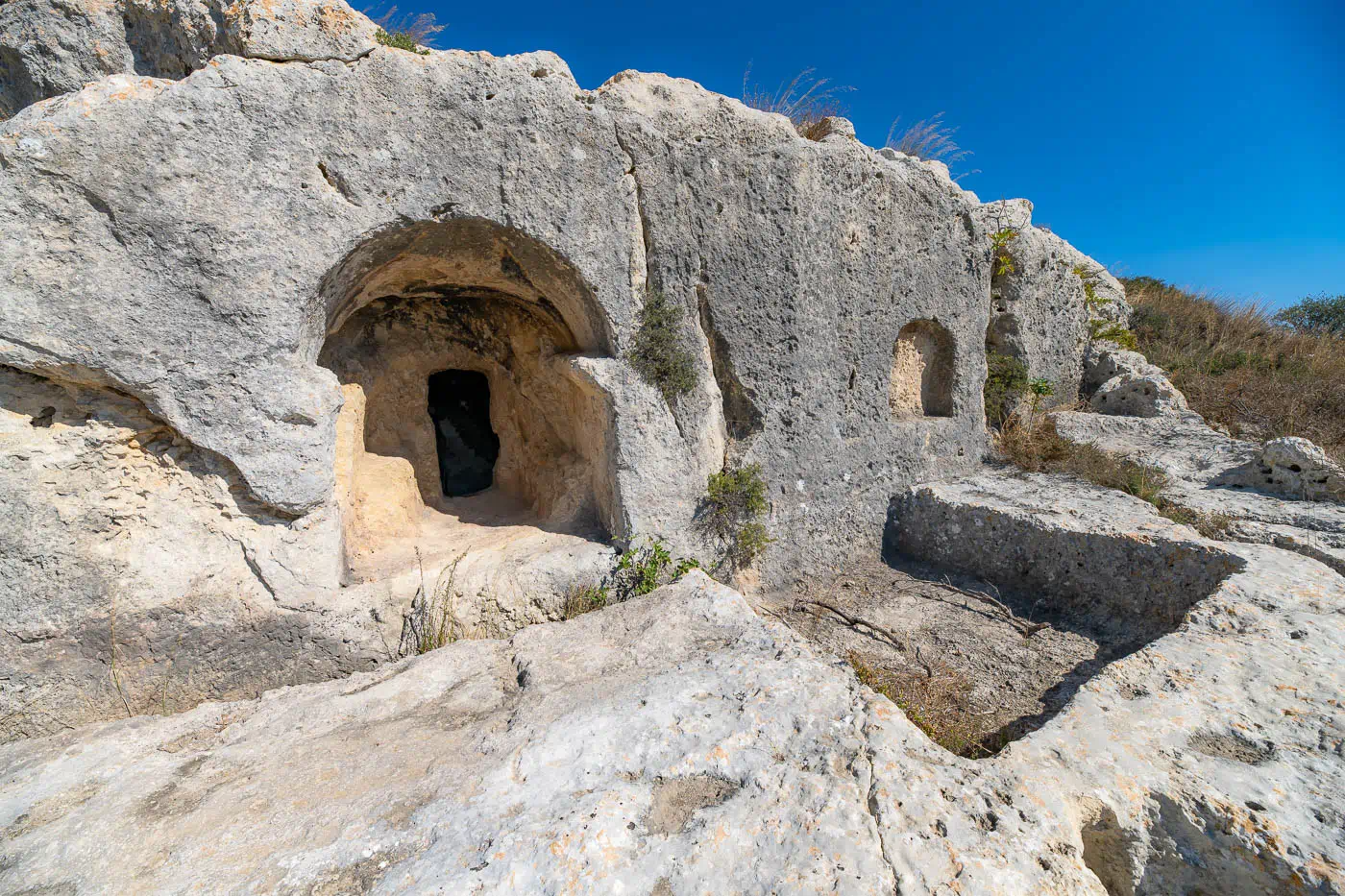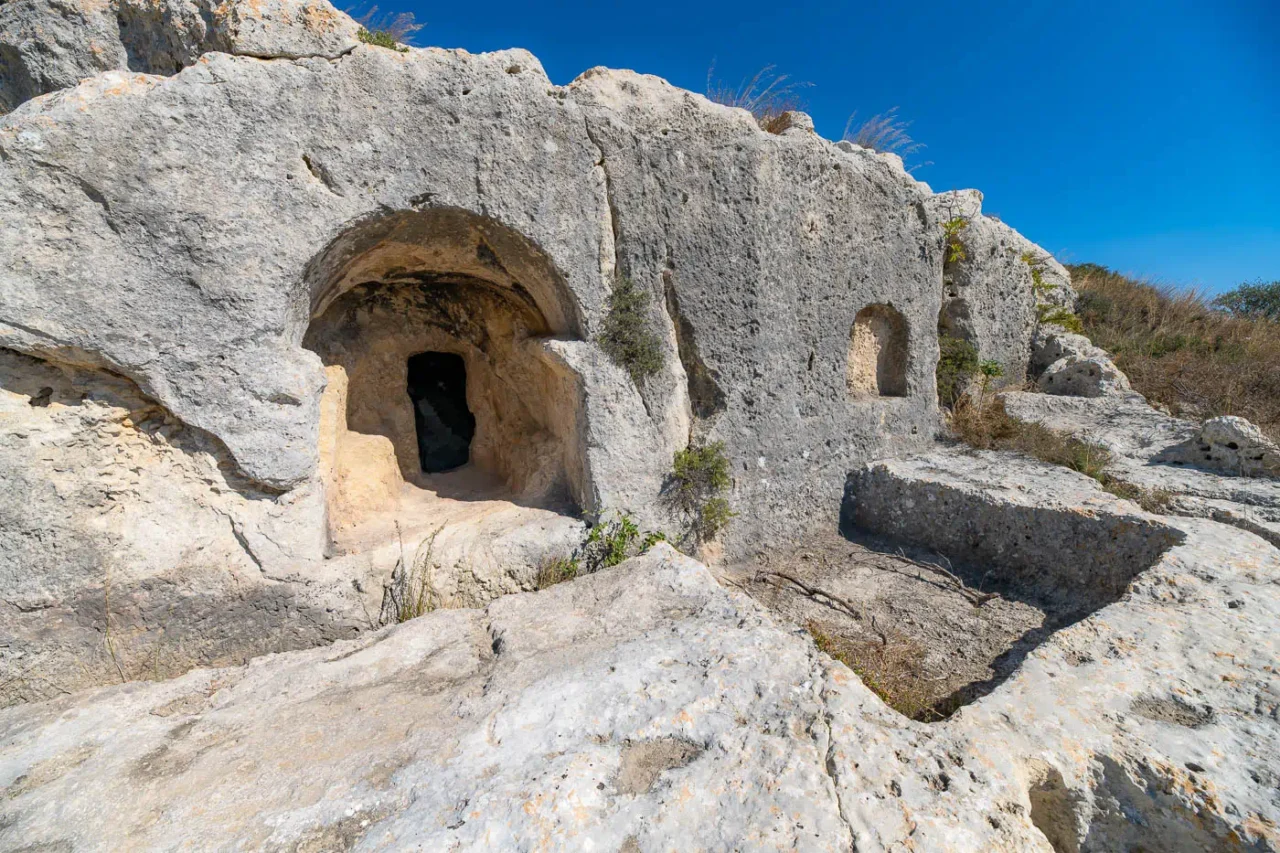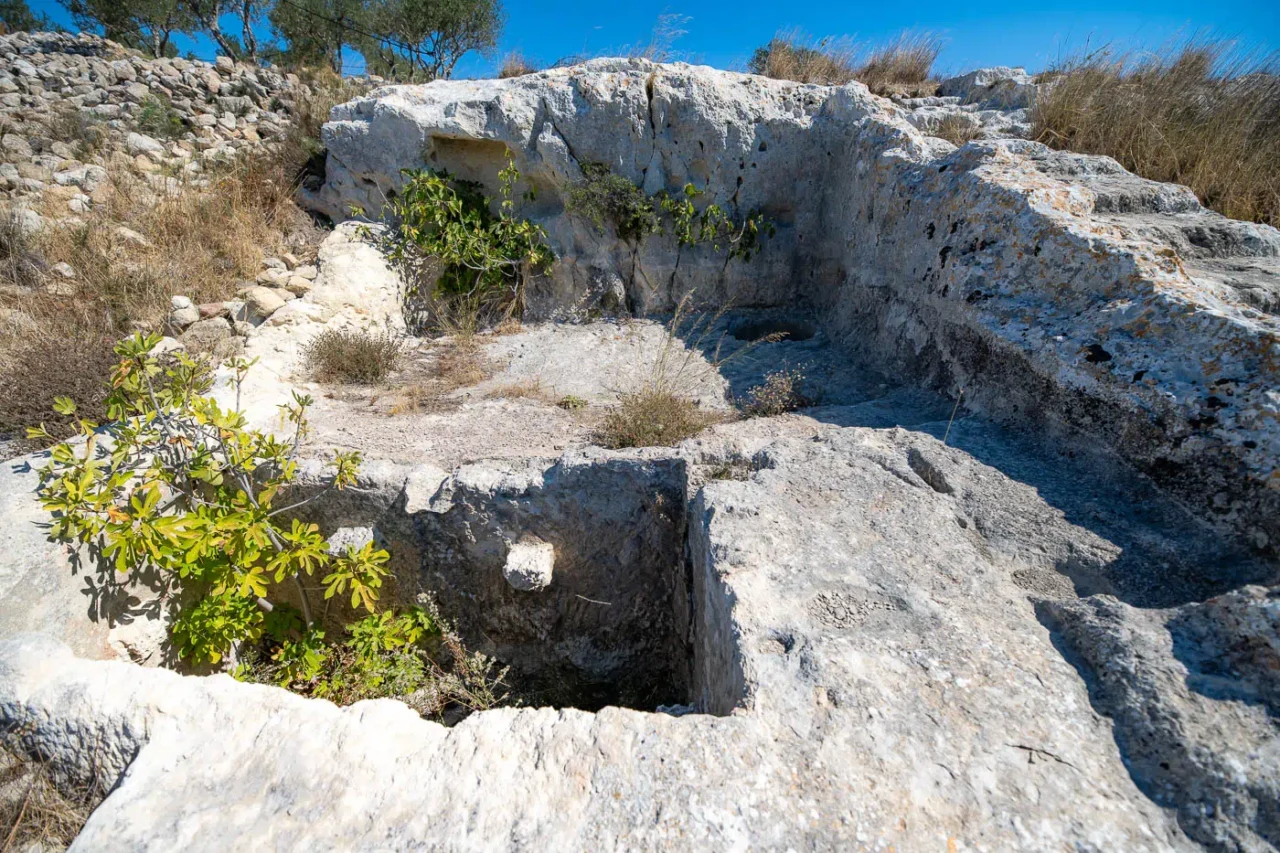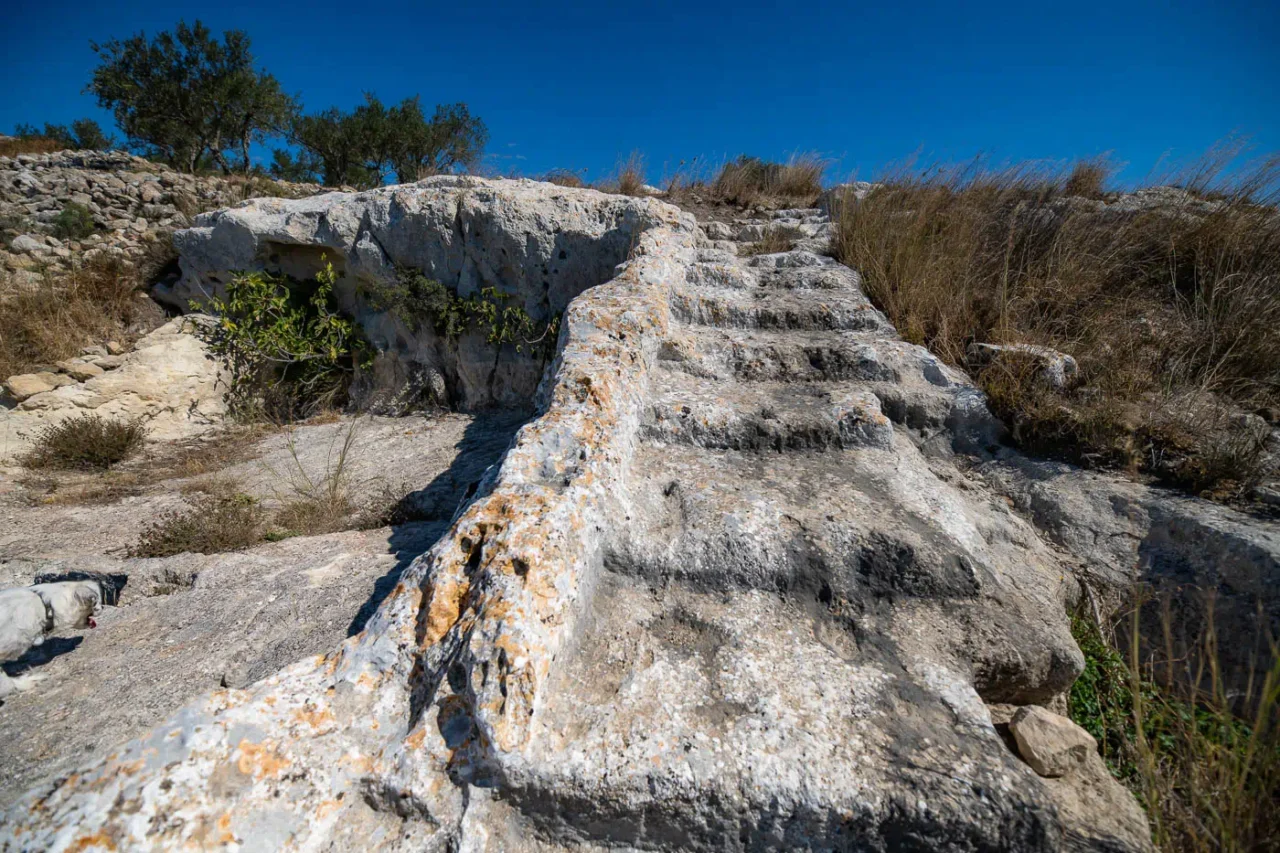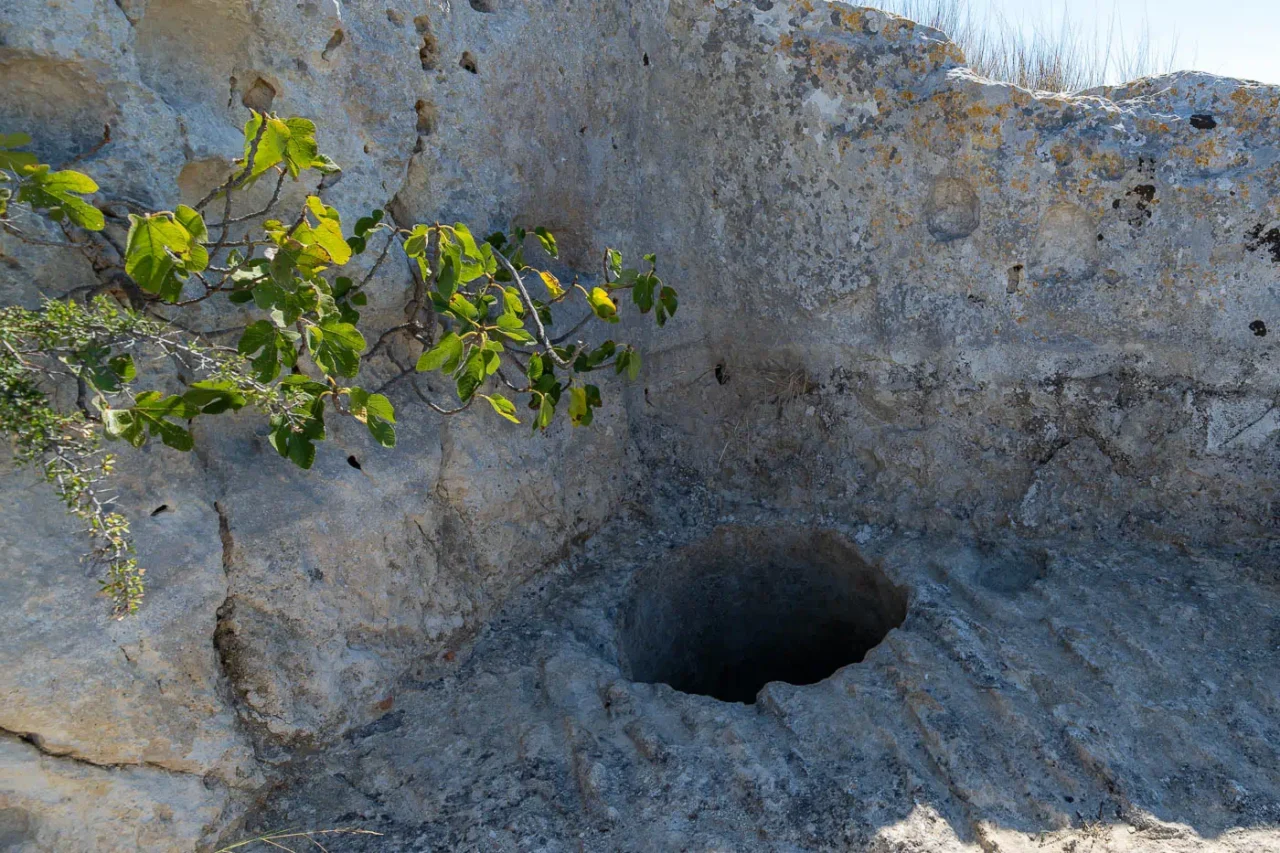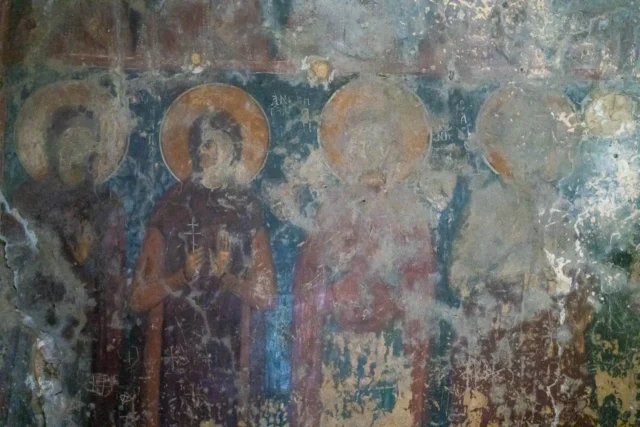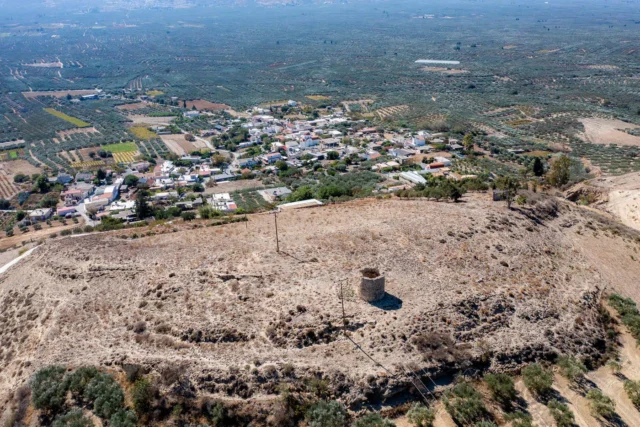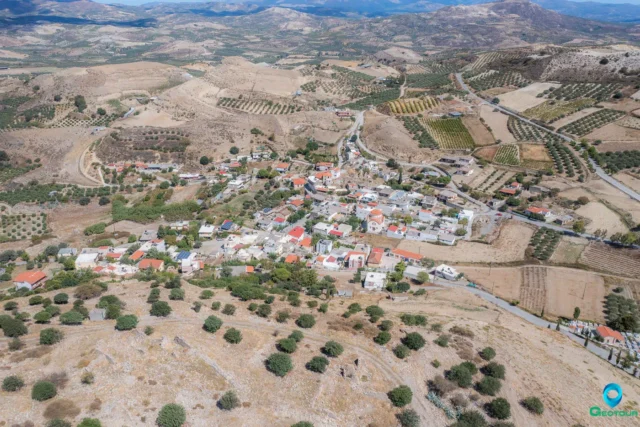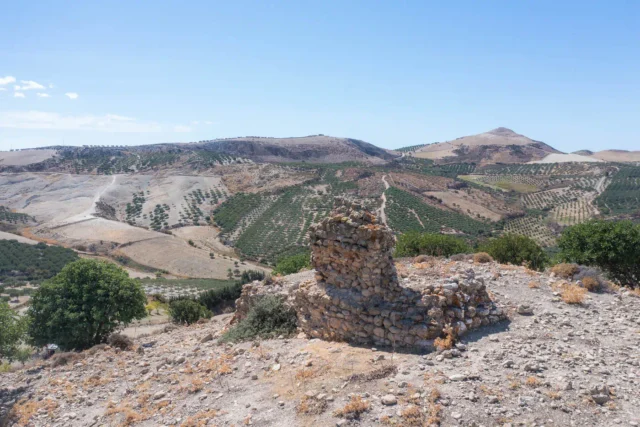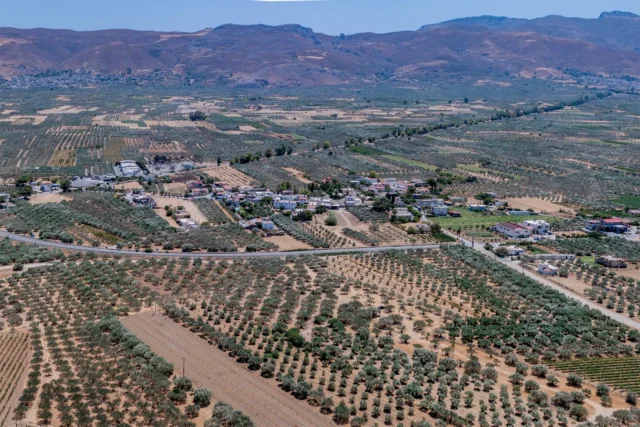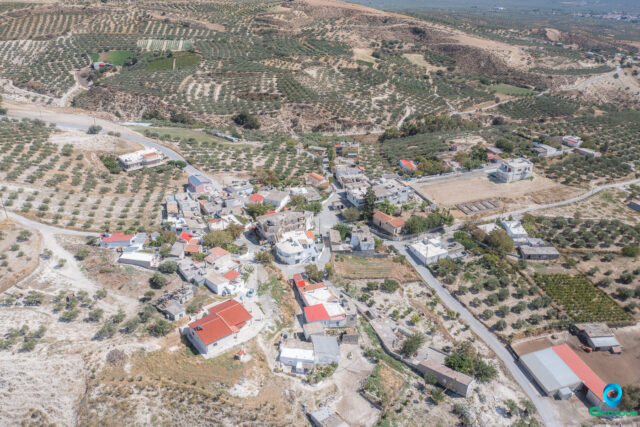An Archaeological Enigma near Apoini
The Vakiotes Acropolis, located east of Sokaras village near Velouli and Apoini, is an intriguing archaeological site offering glimpses into Crete’s Hellenistic and Roman past. This “carved acropolis,” so named due to its numerous dwellings and tombs carved directly into the soft rock, presents a unique testament to ancient ingenuity and adaptation to the landscape.
A Site Carved in Time
Vakiotes stands out among Cretan acropolises for its extensive use of the natural rock formations in its construction. Homes, tombs, and even wine presses were hewn from the living rock, creating a settlement deeply intertwined with its environment. This practice, while not unique to Vakiotes, is exceptionally well-preserved here, providing valuable insights into ancient construction techniques and daily life.
One notable feature is a Roman-era chamber tomb, known locally as “Spilios” (cave), which was left unfinished. Its presence, along with other finds, suggests a long period of occupation at Vakiotes, spanning from the Geometric period (1050-700 BC) to the Turkish era.
More Than Just Homes
The discovery of several wine presses within the acropolis and the nearby Volaka hill indicates a thriving wine production industry in ancient times. This evidence, coupled with the site’s name, has led to speculation about its connection to the god Bacchus (or Dionysus), the deity of wine and revelry. This association, proposed by the late professor Sifis Kosoglou, a native of the region, adds another layer of intrigue to Vakiotes.
Uncovering the Past
Archaeological investigations at Vakiotes, though limited, have yielded significant finds. In 1936, archaeologist Spyridon Marinatos unearthed a Roman-era tomb containing four silver denarii from the reigns of emperors Vespasian, Trajan, and Domitian (late 1st – early 2nd century AD). These coins, preserved within a large glass vessel, are now on display in the numismatic collection of the Heraklion Archaeological Museum.
A Landscape Rich in History
The Vakiotes Acropolis is not an isolated relic of the past. The surrounding landscape bears further witness to the area’s long history. To the west of the acropolis, amidst the fields, lie the ruins of a likely single-aisled vaulted church and the remnants of an old windmill known as “Zouridi’s Mill.” These structures, though less ancient than the acropolis itself, contribute to the rich tapestry of human presence in the area.
Vakiotes Today
Today, the Vakiotes Acropolis stands as a protected archaeological site, declared as such in 2001. It offers visitors a unique opportunity to step back in time and explore a settlement shaped by centuries of human interaction with the natural world. While research and exploration continue, Vakiotes remains an enigmatic site, holding its secrets close and inviting further investigation into its fascinating past.
Archaeological Site: Key Points
- Construction Period: Geometric period (1050-700 BC) to the Turkish era
- Location: East of Sokaras village near Velouli, Crete, Greece
- Historical Significance: Showcases unique “carved acropolis” construction with homes and tombs hewn from rock, evidence of wine production linking it to the god Bacchus, and a long period of occupation spanning centuries.
- Current Status: Protected archaeological site








